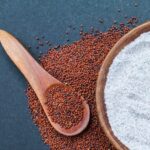My son’s fight with Extra-Pulmonary Tuberculosis
As a mother, there’s a deep, unshakable desire to protect your child from pain and suffering. But life doesn’t always grant us that power. Today, I am sharing the story of one of the most harrowing experiences of my life—watching my 20-month-old son battle a rare and painful condition, extra-pulmonary tuberculosis. I hope that by opening up about this journey, I can help other parents who may feel as lost and broken as we once did.
It started innocuously, almost unnoticeably. One morning, my little boy—who had always jumped out of bed and run to find me in the kitchen—called for me while crying. He wasn’t walking to me, just sitting in his bed. At first, I brushed it off as a bad morning, but then it happened again. And again. Soon, a week had passed, and something felt undeniably wrong.
What was once a confident, toddling child was now crawling again—something he hadn’t done since he was 10 months old. Alarm bells rang in our heads, and we took him to an orthopedic doctor. After a thorough examination and x-rays, the doctor found nothing clinically wrong. Relieved but still concerned, we went to a senior orthopedist for a second opinion. By then, my son had started limping, and his weight was dropping alarmingly.
The second specialist, just like the first, couldn’t pinpoint the cause. He ordered a series of advanced tests, mentioning terrifying possibilities like tumors and cancer. We were petrified, unable to imagine such a diagnosis for our baby. When the MRI ruled out cancer but showed bacterial growth, he suggested it might be rheumatoid arthritis. We had never heard of such a condition in children before. To confirm, we were referred to a pediatric rheumatologist—a specialist we didn’t even know existed.
At this point, our son’s condition was deteriorating rapidly. The rheumatologist confirmed our fears: juvenile idiopathic arthritis (JIA), an autoimmune disease that is incredibly rare in children, especially boys. It felt like the world had come crashing down around us. “Why our son?” was the question that haunted us day and night.
The treatment began immediately—weekly steroid injections and oral medications designed to suppress his immune system. But there was no improvement. My son’s swollen knee only got worse, and his weight continued to plummet. By the time he was 22 months old, he weighed just 10 kilograms. We had to carry him everywhere because he could no longer walk. Watching his once-chubby, active frame wither away was unbearable.
Everyday life became a challenge. My husband and I took turns holding him, feeding him, and comforting him through his tears. His meals felt like a battle—he ate little, and whatever he managed to swallow felt like it wasn’t enough. At times, he would cry inconsolably, and so would we, feeling helpless and broken.
After a month of relentless treatments with no signs of recovery, we were desperate for answers. When we expressed our doubts, the doctor decided to test for tuberculosis as a precaution. I remember rushing to the hospital for the Mantoux test. When the results came back positive, the relief was paradoxical. My son didn’t have JIA—he had tuberculosis. But this was a rare form: extra-pulmonary tuberculosis, which affects areas outside the lungs. In my son’s case, it was his left knee.
The revelation was bittersweet. On one hand, TB was curable; on the other, the immune-suppressing treatments he had been receiving had worsened his condition. To confirm the diagnosis, we had to hospitalize him for a knee biopsy. Watching him undergo surgery was agonizing. The procedure confirmed TB, and the doctors drained the accumulated pus, reducing the inflammation. Though the biopsy wound took months to heal, it was the beginning of a new chapter.
The treatment for TB was grueling. For 18 long months, my son had to take a combination of high-dose antibiotics. The initial weeks were particularly challenging—he would cry and vomit the medicines. But we persisted, gently explaining to him how important they were. Slowly, he adapted, showing a resilience that inspired us to keep going.
Physiotherapy became a critical part of his recovery. His left leg had become severely weakened, and the muscles had wasted away. We attended regular sessions to help him regain strength, but progress was painfully slow. He limped for months, and his growth lagged behind his peers. No amount of tonics or supplements seemed to help him gain weight. Still, his ability to walk again felt like a small victory.
But just when we thought we were seeing the light at the end of the tunnel, new scans revealed another setback: a hole in his knee joint. The doctor explained that the infection had damaged his growth plate, potentially halting the development of his knee. He recommended another surgery to scrape out any remaining infection.
By this point, we were emotionally, physically, and financially drained. Another surgery felt like an impossible mountain to climb. Desperate to explore all options, we turned to alternative medicine. A highly recommended homeopathic practitioner in Ahmedabad gave us hope during a virtual consultation. Her firm reassurance and detailed guidance felt like a lifeline.
We followed her treatment rigorously, and after three months, a follow-up x-ray showed the first signs of healing. For the first time in years, we allowed ourselves to feel hopeful. The alternative medicine, combined with physiotherapy and a high-protein diet, helped my son recover his strength and health.
Today, my son is thriving. His scars tell a story of resilience and courage, a reminder of the battles he has won. Our journey was a long and painful one, but it taught us the importance of perseverance, faith, and exploring all possible avenues of care.
To every parent reading this: If you’re facing a similar ordeal, please know you’re not alone. I am here to listen, support, and share. Together, we can form a community of strength and hope. Please don’t hesitate to reach out to me—let’s navigate this journey together.
We are stronger when we stand together.


Very nice & positive move to share your experiences with others, encouraging & helping others. You doing a great job dear. Loads of love 😘❤️ to ù & AruVed.
Thank you so much for your appreciation. Loads of love.